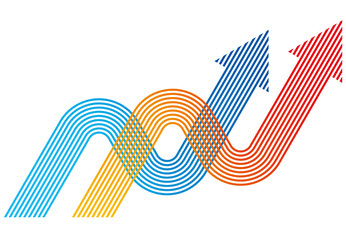I’ve been a Business Analyst for about 15 years now starting as a graduate back in the day. And while I do not consider that to be close to a career’s worth of experience I have certainly seen significant changes in the way business analysis is performed and the tools that are used thanks to the evolution of technology.
When I started out, we scribed notes from meetings and workshops in a notebook, created hand drawn models copied from whiteboards (unless you were lucky enough to have an electronic whiteboard that could print) and went back to our desks to type up the minutes for distribution. There was a fair amount of double handling especially when the end product is not even a deliverable.
 These days it is rare to attend a meeting without a laptop or iPad to type notes and a smartphone to take photos of any whiteboard drawings produced. It is an increasingly acceptable practice to include photos of whiteboard drawings in documents rather than spend time reproducing them in a modelling application if the artifact being created is simply a work product and not a formal deliverable. With this streamlining, documents can be issued faster which in turn results in actions being completed and feedback provided in a timelier manner.
These days it is rare to attend a meeting without a laptop or iPad to type notes and a smartphone to take photos of any whiteboard drawings produced. It is an increasingly acceptable practice to include photos of whiteboard drawings in documents rather than spend time reproducing them in a modelling application if the artifact being created is simply a work product and not a formal deliverable. With this streamlining, documents can be issued faster which in turn results in actions being completed and feedback provided in a timelier manner.
Back in the day when I was working for an interstate client, I commuted to the client site every week for 6 months during the design phase of a project to participate in workshops in person with business stakeholders. Fortunately these days the technology available such as video conferencing and screen sharing through Skype for example means that the distance is less of a barrier to effective communication and it is possible for teams to work remotely to achieve the same outcome.
The ability to collaborate on documents with other business analysts and implementation SMEs has been greatly enhanced with tools that allow document sharing so that multiple users can access and update the same document in real time from a common cloud storage location. Gone are the clunky shared spreadsheets that are locked when one user has it open for editing or finding out that the edits you have made will be lost because another user has edited the same cell and committed their changes before you.
Use of email and instant messaging has increased significantly especially with wireless internet connectivity in most offices and smartphones configured with mobile versions of the email client used. It is more reliable than the non-portable desk phone these days. Someone will more likely respond to an email or instant message while they are on the move throughout the day because accessing these messages is far easier than checking the voicemail box attached to the desk phone.
I had a situation recently in which I had just joined a new project and thought I would opt for the traditional approach of calling an interstate project team member to introduce myself as I would need to work closely with her during the project. I checked her status on the instant messenger application to ensure she was available and made my call to her desk phone. She did not answer so I left a voicemail message with my extension number to return the call. Several hours passed and I saw that her status had not changed from Available during this whole time. So why wasn’t she calling me back I wondered. Later that day in a team meeting I was introduced to the team member in person, she was working remotely at the same office as myself and not at her usual interstate location which meant that her voicemail was not accessible! Had I sent an email or instant message I would have obtained results much faster!
Even the humble desk phones are becoming smarter with the technology available. Users can login using their extension number to any compatible device in the office promoting activity based working, hot desks and more flexibility.
Although I have always enjoyed my role as a Business Analyst I have to admit with the number of exciting changes brought about by technology and smarter ways of working I appreciate how much more effective I can be with my time and the flexibility of working from any location. There’s no going back for me now.
Author: Sakina Haque, Business Analyst at Career Break in Cheshire, United Kingdom.
Sakina is a career business analyst who achieves satisfaction from seeing her designs and requirements materialize into tangible solutions that improve user experience. She often enters into debates around the differences between business requirements, business rules and solution requirements. Sakina attained the CBAP designation in 2012 and is also a Certified Scrum Product Owner.